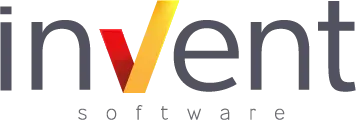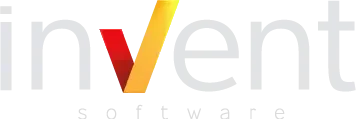Do you know what MDF-e is, how to issue the Electronic Manifest of Fiscal Documents (MDF-e), who is required to present this electronic fiscal document and how to consult it? Keep reading to find out!
What is MDF-e?
If your company transports cargo, you have certainly heard about MDF-e. Established by Sinief Adjustment 21/2010, the Electronic Manifest of Tax Documents (MDF-e) It is an electronic tax document, which exists only digitally., which speeds up the batch registration of tax documents and replaces the old Cargo Manifest (model 25).
The MDF-e includes a summary presentation of information corresponding to cargo transportation. It allows the traceability of the physical movement of cargo, the identification of those responsible for transporting the goods and even the recording of cargo transport, from start to finish.
In this sense, if an ICMS taxpayer hires an independent cargo transporter and does not issue the MDF-e, his/her situation will not be regularized and may be subject to fines or other penalties related to cargo transportation and missing documentation.
The main purpose of MF-e is to link the tax documents transported in the cargo unit used, with legal validity guaranteed by the digital signature of the issuer, together with an authorization for use of MDF-e by the tax administration of the taxpayer's federated unit.
Who is required to issue the Electronic Transport Manifest?
If you are an ICMS taxpayer who transports cargo, you may be required to issue this transport document. The issuance of this tax document is intended for companies that need to comply with their tax obligations related to cargo transportation.. In other words, it is aimed at ICMS taxpayers who:
- They issue CT-e for the transportation of fractional cargo (corresponding to more than one transport document);
- That issue NF-e for the transportation of goods in their own or rented vehicles;
- They hire independent freight transporters.
In other words, the obligation to issue the MDF-e is imposed on some taxpayers, as long as they transport the goods in their own vehicle, rented vehicle or under contract for autonomous cargo transportation, and carriers, which are CT-e issuers, are also required to issue the MDF-e.
How to issue the Electronic Transport Manifest?
To issue it, you must have a digital certificate and an issuing system installed.
According to the National MDF-e Handbook, The first step to issuing this document is to access your tax system. and fill in the appropriate fields, stating whether you are an issuer of the Electronic Transport Knowledge (CT-e) or Electronic Invoice (NF-e).
Afterwards, the MDF-e authorization will be carried out., in which the transport is released and an access code is obtained for issuing or printing the Auxiliary Document of the Electronic Manifest of Fiscal Documents – the DAMDFe).
The third step, therefore, will be the printing of the DAMDFE, which is usually requested by the inspector, at the inspection post, for the purpose of checking the information and releasing the cargo with the goods.
At the end, the taxpayer must complete the closing process through the system., informing the tax authorities about the end of the transport and delivery route of the cargo.
What you need to know about the MDF-e Consultation
Tax management systems offer several features for MDF-e, such as:
1. Authorization, termination and cancellation of MDF-e;
2. Closing of MDF-e issued by third-party software;
3. Check the status of the MDF-e at SEFAZ;
4. Create MDF-e sketch;
5. Preview the XML and DAMDF-e;
6. Duplicate MDF-e, for recurring processes.
To meet each of these functionalities, Invent developed a complete tax solution for managing MDF-e.
Meet TaxPlus:
#InventTip:
Does your company need to manage tax documents related to cargo transportation? With TaxPlus MDF-e, we help companies manage transportation tax documents. We have several features available, such as:
Automatic filling of download data:
To optimize the process of issuing the Electronic Cargo Manifest, the solution automatically fills in unloading data from invoices issued by the TaxPlus NF-e solution.
Automatically fill in the access key:
TaxPlus MDF-e offers the feature of automatically filling in the NF-e (model 55) and CT-e (model 57) access key in the DAMDF-e supplementary information, with the purpose of optimizing the document issuance process.
Automatic printing of DAMDF-e after authorization at SEFAZ:
You will automatically print the DAMDF-e as soon as the authorization is received by SEFAZ, eliminating the need for manual intervention by the user.
Sharing documents via email:
TaxPlus NF-e/CT-e allows you to share documents via email with your customers’ contacts related to NF-e and CT-e. In addition, it also offers the option to send emails to drivers involved in the transport, related to MDF-e. This functionality facilitates communication and sharing of important information, ensuring that tax documents and transport details are sent efficiently and directed to the correct recipients.
Automation in filling in the vehicle and driver license plate from the NF-e:
TaxPlus MDF-e has an automation feature that searches the data from the Electronic Tax Invoice (NF-e) linked to the Electronic Tax Document Manifest (MDF-e) for vehicle and driver information. This data is automatically filled in the Manifest, without the need for manual input.
Vehicle and Trailer Registration:
The solution can be configured to consider employees (registered in SAP Business One) as drivers, and vehicles can be registered in advance so that when entering the MDF-e, they can simply be selected.
Driver registration:
The solution can be configured to consider employees (registered in SAP Business One) as drivers, thus streamlining the MDF-e issuance process.
Inclusion of drivers after MDF-e authorization:
During the transportation of cargo, the vehicle's drivers may be changed, and TaxPlus MDF-e allows drivers to be included even after the document has been issued, providing accuracy in the documented information.
Storing the MDF-e XML in the database and local directory:
TaxPlus MDF-e has the ability to store the XML of the Electronic Tax Document Manifest (MDF-e) both in the database and in a local directory. This allows the XML to be stored in a secure and organized manner, facilitating access and retrieval of documents when needed.
Possibility of creating customized DAMDF-e:
In addition to pre-configured DAMDF-e models, the solution offers the possibility of creating customized models, thus allowing you to meet the specific needs of each business.
Integration with invoices issued by TripleOne:
TaxPlus MDF-e has direct integration with invoices issued by TripleOne, allowing the automatic import of information, speeding up the process and ensuring data consistency.
TripleOne Validation:
MDF-e performs TripleOne validation, ensuring compliance and integrity of the data entered in the tax document.
With a wide range of features developed to simplify and streamline company operations, TaxPlus MDF-e stands out as a complete and integrated solution for issuing and managing the Electronic Manifest of Tax Documents.
Its intuitive and efficient usability, combined with management tools, make this solution the ideal choice for companies looking for practicality and efficiency in issuing electronic tax documents.
Want to know more about TaxPlus MDF-e? Then click here and learn about our solution that simplifies fiscal and tax routines or talk to our team of experts!
And if you liked the article, how about sharing it with your friends on social media? 😀





